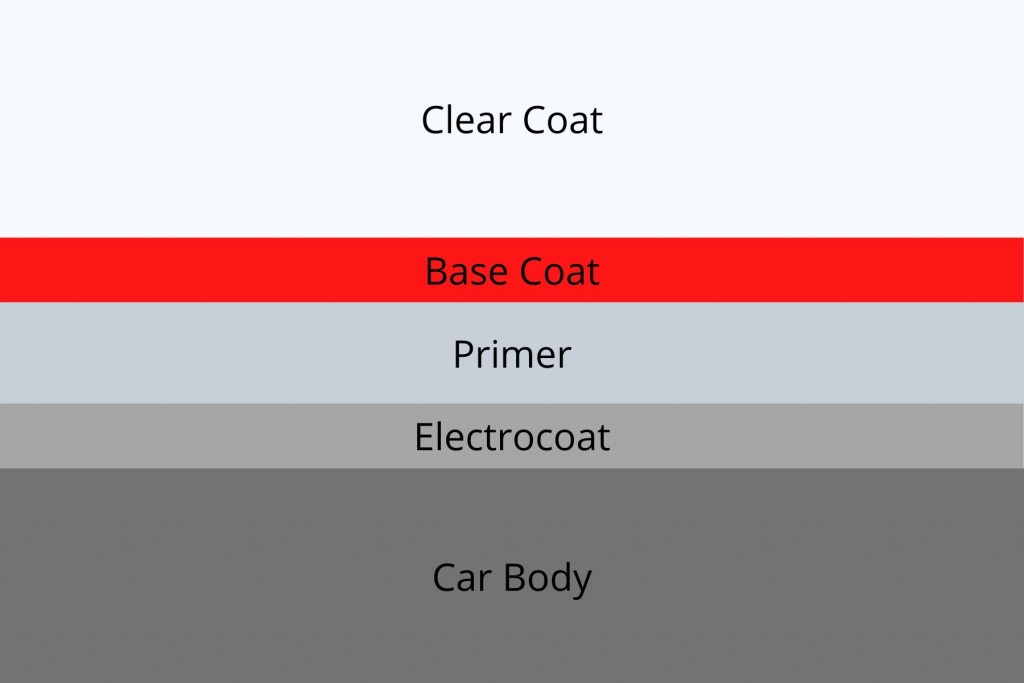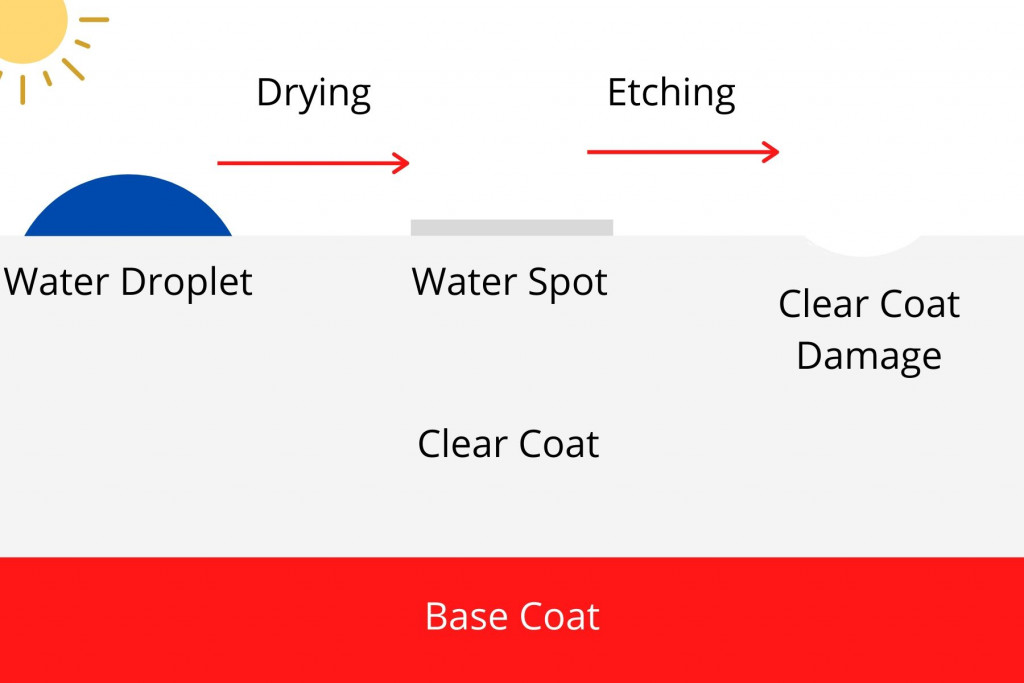Should you dry your car after you wash it? That’s a really common question that car owners ask. I remember when I got my first car, I had no idea whether it needed trying and how you actually should do it.
In this article, I’ll explain exactly why drying your car is so important and what tools you should use to do it safely. So let’s get started.
The Quick Answer
You should always dry a car after washing it to prevent water spots. Never attempt to air dry the car after washing, instead, use a clean, plush microfiber towel or a dedicated car dryer to ensure there is no water left on the surface.
Why Should You Dry Your Car?
In short, you should dry your car to prevent water spots occurring on your car’s paintwork, glass and trim.
There are two main issues with water spots.
- They look pretty bad and stop your car looking shiny
- They can damage your paint and are hard to remove
The first reason is pretty self-explanatory. Nothing ruins the look a freshly washed care quite like hundreds of water spots. They make the paint look dull from far away, and dirty when you look close up.
The main issue though, is that water spots can actually cause damage to your paintwork, and are hard to remove if you let them sit there for too long.
Water Spot Damage
You may not think that water spots would cause any damage. I mean surely a car’s paintwork is capable of coping with a few drops of water right?
Unfortunately, your car’s paintwork isn’t as strong as you may think. And it’s highly susceptible to damage, usually during the wash process.
Whilst you may think you’re helping when you wash your car, if you don’t do it right, you can cause a whole host of problems.
And if you’re still using a sponge to wash your car, then you should check out this article I’ve written about why you should never use a sponge to wash a car.
Okay, so back to water spots.
Water spots can cause what’s called “etching”. This happens when water spots are essentially baked into your car’s clear coat when exposed to direct sunlight, or hot conditions.
Your car’s paintwork has several layers. The two most important to consider, are the base coat and the clear coat.
The base coat provides the colour, and the clear coat sits on top protecting the colour from UV rays, fading, oxidation, corrosion etc.

So how does this damage occur.
Well, when the water evaporates, it leaves minerals and metals behind on the surface. This is why you can see a spot on the paint.
Essentially, it’s not the water that causes the damage, but the impurities in it. If the water has corrosive impurities, and it dries on the surface, then these chemicals will eat away at the paint. This is known as etching.

And unfortunately, most water from the hose, and rain, contains these impurities.
The best thing you can do, is dry your car after washing, and apply a good wax, sealant or even a ceramic coating on the paintwork which will protect the clear coat and prevent water spot etching from occurring.
How to Dry Your Car
So the next question people usually ask at this point, is how do you actually dry a car?
The easiest way to dry your car, is using a microfiber towel. Microfiber does a great job at absorbing water, whilst being very gentle on your paintwork so it won’t cause scratches like other materials such as bath towels, squeegees and chamois.
It’s best to use a microfiber towel that’s slightly damp. It may sound counter-intuitive, but damp microfiber picks up water better than a completely dry microfiber towel.
Try not to actually wipe the paintwork, but instead, lay it on the panel, and lightly press. This soaks up the water without risking scratching the paintwork.
Take a look at this article I’ve written about using microfiber towels safely to dry your car.
I also find that you can also effectively “rinse your car dry”, if you have a good sealant or wax on the surface.
You should use a really light pressure hose to do this.
Just run it over your car and watch the majority of the water simply run off taking the residual water with it.

What Not To Do
Now there are plenty of ways to dry your car that you should definitely avoid. Here are a few of the “don’ts” when it comes to drying your car.
- Never use a bath towel. The fibers are way too coarse and they’ll scratch the clear coat.
- Don’t use chamois leather. It is too aggressive and will scratch the paintwork.
- Squeegees should never be used on the paint. They drag dust and dirt across the surface and inflict clear coat damage.
Check out this complete guide to washing your car without causing scratches.
Only Dry the Car When It’s Clean
It’s also really important to point out that you should only ever dry the car immediately after it has been washed.
Otherwise, you risk rubbing dirt into the paintwork, and causing hundreds of tiny scratches.
Don’t panic about the water spots from the rain causing damage. As long as you’ve got a good wax or sealant on the paintwork, you won’t get any etching issues.
Just make sure you’re washing your car every couple of weeks and your car will be fine.
Frequently asked questions
I thought it’d be a good idea to finish off this article with a few of the most frequently asked questions car owners are often wondering about drying their cars.
Can You Drive a Car to Dry It Off?
Driving a car can help to dry it after washing but it is not completely effective. It only works if you have a very hydrophobic sealant, wax or ceramic coating on the surface though. Otherwise the water will cling to the paint, rather than fly off. Even still, it’s likely you’ll still get drips forming when you park the car up.
Should You Dry Your Car After It Rains?
You don’t need to dry your car after it rains as long as it has a good wax or sealant on the paint. Don’t dry a car after it rains unless you’ve washed it first. Otherwise, you risk scratching the paint by rubbing dirt and dust into the clear coat.
Which Type of Microfiber Towel is Best for Drying?
The best microfiber towel for drying is one that’d plush and fluffy. You don’t want to use something that’s short-pile as it has a higher risk of scratching the paint. Always make sure the microfiber towel is completely clean before using it on the paintwork.
Thanks for reading! I hope you’ve found this article helpful. Don’t forget to check out the rest of the website to learn more about making your car look it’s best.

